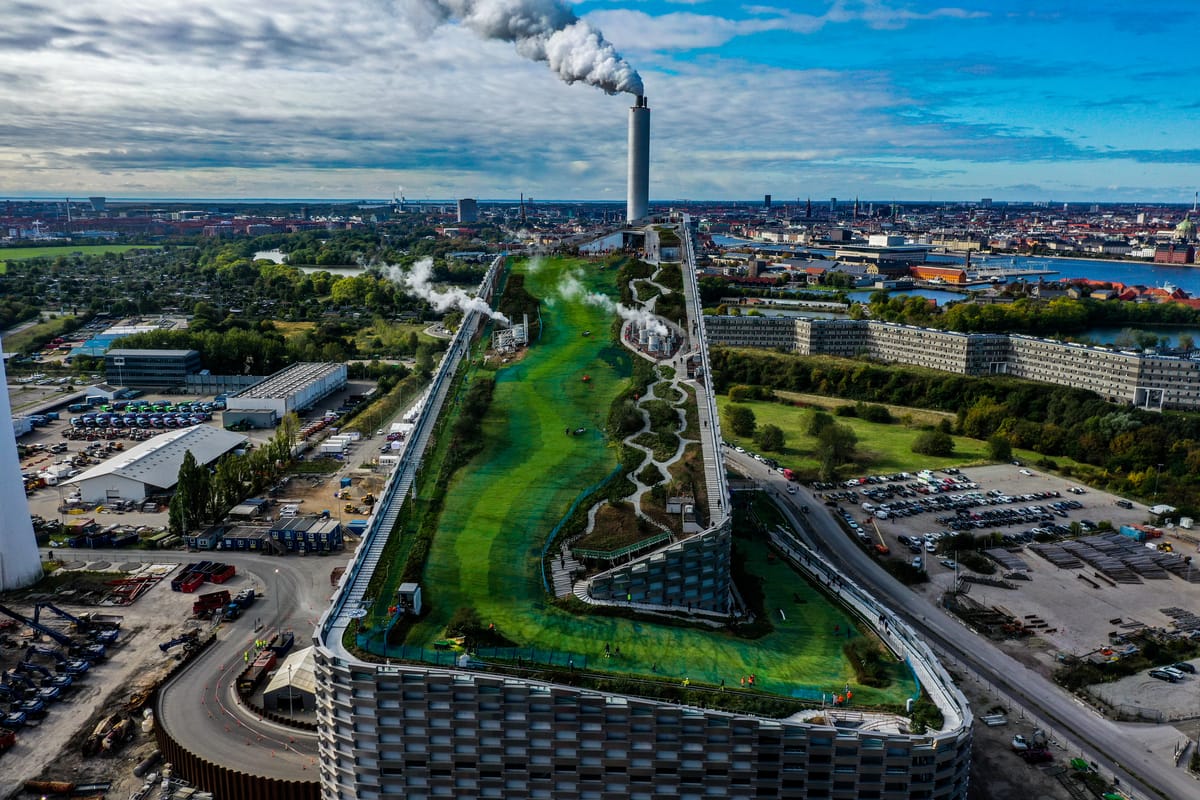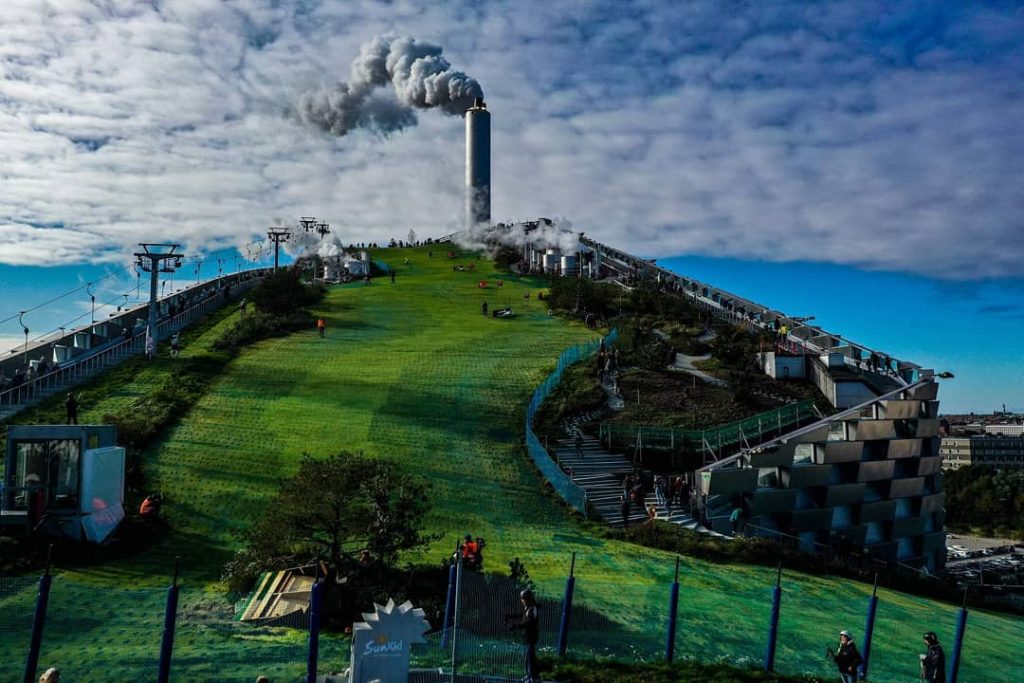Denmark’s CopenHill Dry Ski Slope Declared ‘World Building of the Year’

The ARC (Amager Resource Center) waste-to-energy power plant in Copenhagen has been awarded ‘2021 World Building of the Year’ at the World Architecture Festival for its rooftop leisure area which includes a long dry ski slope wrapped around the building, its surface supplied by Italy-based Neveplast.
The award however is a recognition of the building’s ecologically sensitive industrial design which has included creating a natural green parkland area on the roof of the building, with grass allowed to grow up within the dry ski slope surface and larger shrubs and trees growing on the roof at the sides of the slope.
In fact the slope is intended to act as a ‘green bomb’ intended to “green-up” the adjacent industrial area as seeds blow from plants and birds, bees, butterflies and flowers move in, creating a vibrant green pocket and forming a completely new urban ecosystem for the city of Copenhagen. Landscape architects SLA have planted 7,000 bushes and 300 trees on the sloping roof.
The company’s biologists have monitored its biodiversity since the complex was completed in 2019 and in 2020 found 119 different plant and tree species there, 56 more species than had originally been found.

The 10,000m2 green roof also incorporates a 490 metre hiking or running trail, and climbing wall and links to more parkland below the building. The slopes include a steep 45% upper section for good skiers, a timed slalom run and a freestyle park.
The concept is part of architect BIG’s notion of hedonistic sustainability and aligns with Copenhagen’s goal of becoming the world’s first carbon-neutral city by 2025.
Beneath the ski slopes furnaces and turbines convert 440,000 tons of waste annually into enough clean energy to deliver electricity and district heating for 150,000 homes.
In announcing the award at the World Architecture Festival judges praised the way the building “addresses the role of architecture in the new world of recycling and zero carbon,” adding, “It treats infrastructure projects in a way which makes people say, ‘Yes in my back yard’ rather than ‘no.’”




